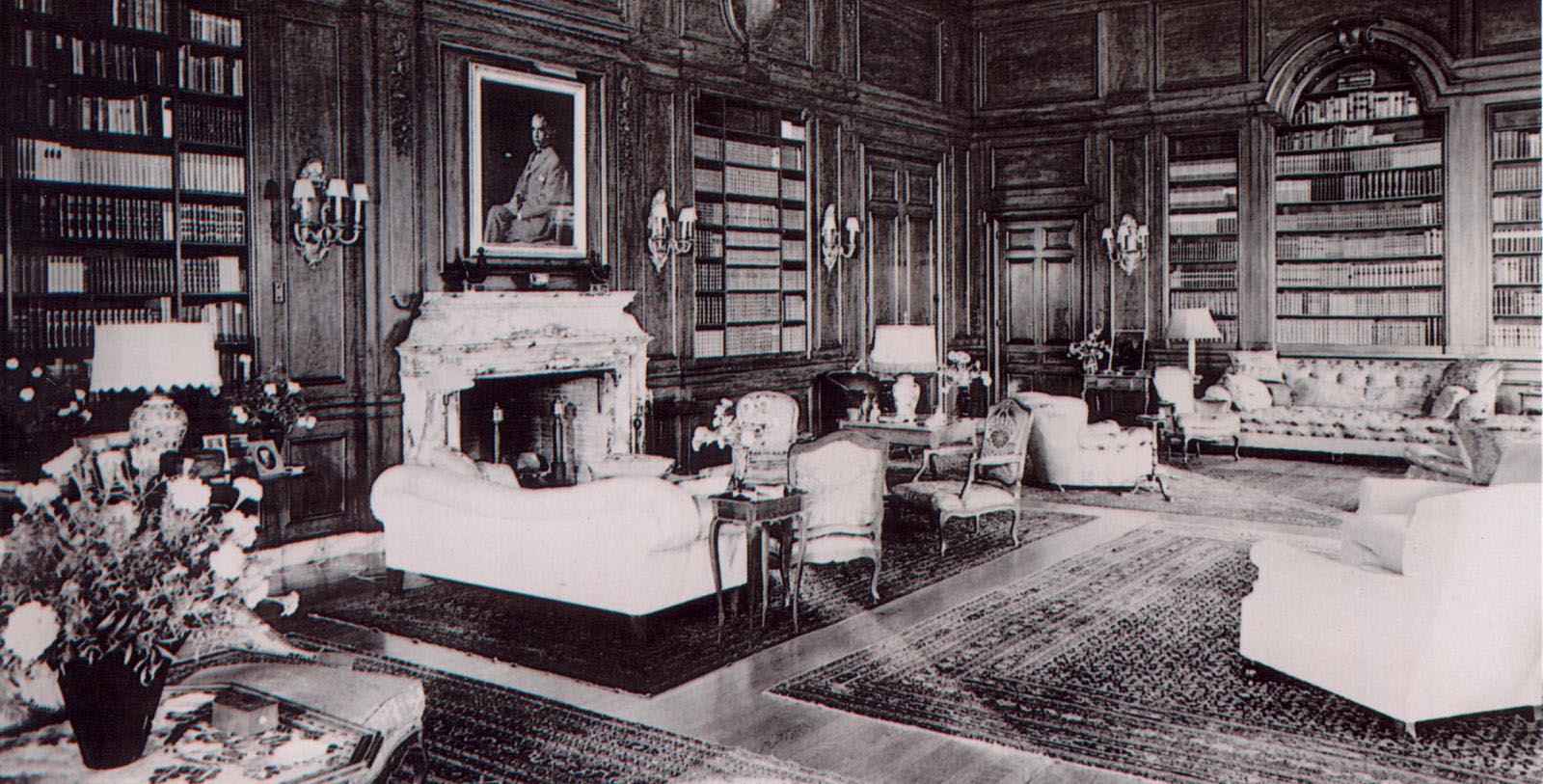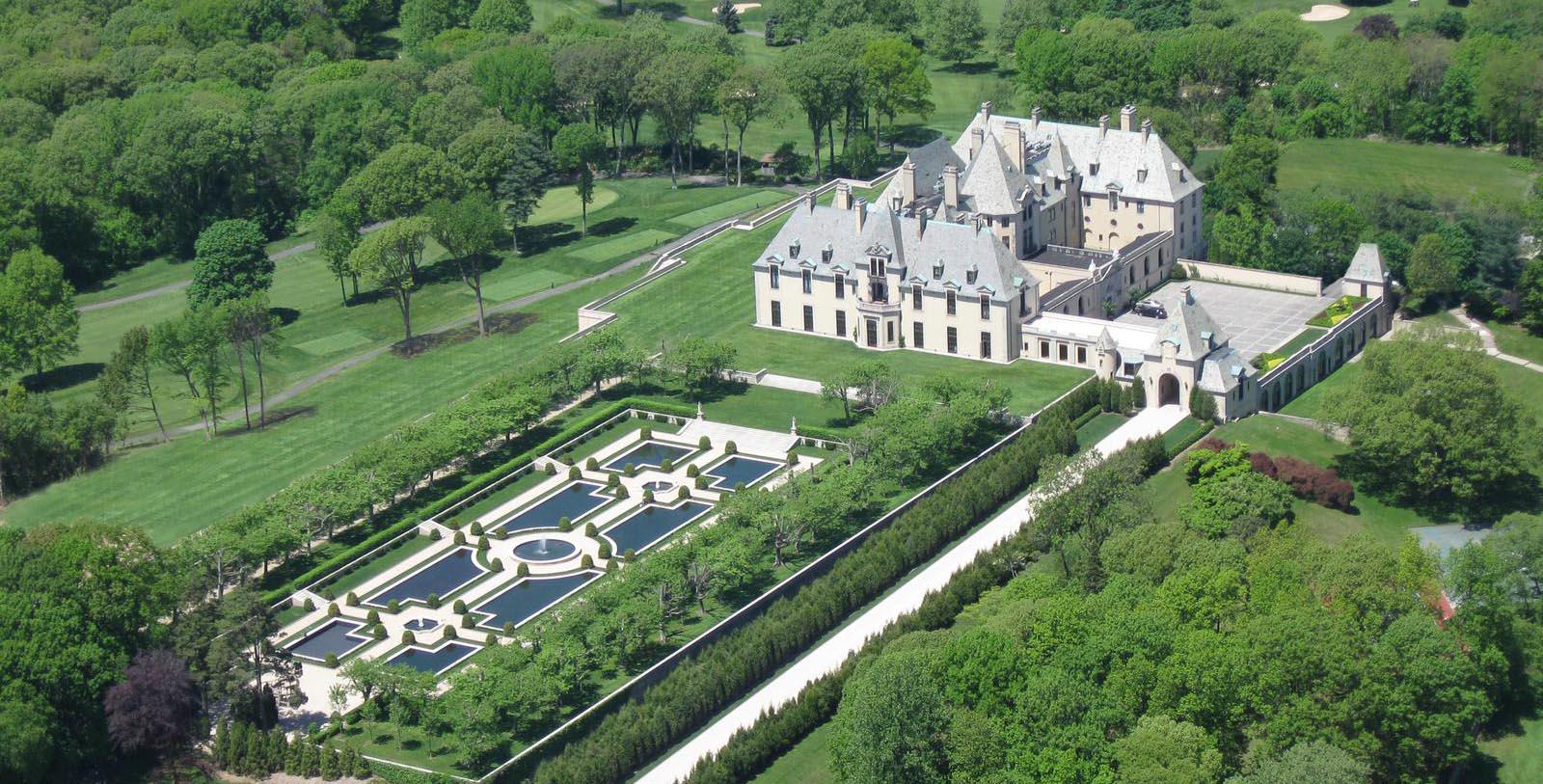Receive for Free - Discover & Explore eNewsletter monthly with advance notice of special offers, packages, and insider savings from 10% - 30% off Best Available Rates at selected hotels.
oheka castle history
Discover OHEKA CASTLE, which was once the summer home of philanthropist Otto Hermann Kahn.
The story of the Historic OHEKA CASTLE begins with the renowned banker, Otto Hermann Kahn. Originally born in Germany, Kahn made a name for himself working for the American investment firm, Kuhn, Loeb & Co. Kahn specifically had a knack for handling the financial accounts for some of the nation’s largest railroads, including the Missouri Pacific Railroad, the Chicago and Eastern Illinois Railroad, and the Baltimore and Ohio Railroad. He even played a direct role in the reorganization of the Union Pacific Railroad, where his collected demeanor contrasted incredibly well with its leading executive, E.H. Harriman. He subsequently became incredibly affluent due to his financial talents. With his newfound wealth, Kahn constructed a magnificent country manor in Morristown, New Jersey, called “Cedar Court.” Unfortunately, a fire completely destroyed the home shortly after it opened in 1905, forcing Kahn to find a new location for his residence. The banker settled on the rustic community of Huntington, on New York’s Long Island.
Kahn set to work building what would become OHEKA CASTLE in 1915, when he purchased some 440 acres of land around Huntington’s Cold Spring Harbor neighborhood for a sum of $1 million. He subsequently spent the next two years developing the land so that it could handle the foundation for his new home. Vowing to ensure that this second estate would not suffer the same fate as the first, Kahn invested heavily into fireproofing the building. To that end, he hired one of the most accomplished architectural firms in the United States, Delano & Aldrich. The architects managed to design a layout that called for the building to be constructed entirely out of steel and concrete, making it the first totally fireproof residential buildings. Despite the rudimentary building materials, Delano & Aldrich still managed to make the structure one of the most beautiful in all of New York. Resembling a magnificent European castle, the structure displayed an amazing blend of Victorian-era architecture.
OEHKA CASLTE finally debuted roughly two years after construction on it began in earnest. The name “OHEKA CASTLE” was chosen because it stood as an acronym for Kahn’s full name. With a full length of 109,000 square feet, OHEKA CASTLE was the second largest private home throughout the entire country. It took Kahn and his family nearly $11 million to complete, a staggering amount for early 20th century America (around $158 million in today’s money). The manor required a full-time staff of some 126 employees in order to adequately service its 127 different rooms. Thirty-nine spectacular fireplaces operated throughout the hotel, as did a brilliant ballroom, dining room, and library. The beautiful staircase that ascended from the entry foyer was inspired by the Château de Fontainebleau in France. A gorgeous sunken French formal garden proliferated in front of the OHEKA CASTLE’s main entrance as well, with tennis courts, greenhouses, and a luxurious 18-hole golf course located further out on the 443-acre complex.
Otto Hermann Kahn invited countless guests to his estate over the years, impressing all who visited. It even inspired the renowned author F. Scott Fitzgerald to create the setting for a portion of his legendary novel, The Great Gatsby. OHEKA CASTLE continued to be Kahn’s private estate until his death in 1934. Still, the building managed to captivate the imaginations of all who saw it, including director Orson Welles, who used photographs of the structure to serve as the fictional portrayal of Xanadu in his film Citizen Kane. His family eventually sold the estate several years after his passing, where it briefly spent time as a retreat for New York City sanitation workers. A more permanent role for the building emerged in 1948, when the Eastern Military Academy renovated the entire structure into its main campus. Fortunately, real estate developer Gary Melius purchased OHEKA CASTLE in the 1980s and greatly renovated the structure to resemble its original appearance. OHEKA CASTLE has since become one of the nation’s most exclusive destinations for wedding ceremonies and long vacations. It is now listed on the National Register of Historic Places and is both a member of Historic Hotels of America as well as its sister program, Historic Hotels Worldwide.
-
About the Location +
OHEKA CASTLE resides in the quaint Town of Huntington, which is located along Long Island’s northern shore. One of the ten towns to compose Suffolk County, Huntington is just a little over an hour away from New York City. The town itself was founded in by three men in 1653: Richard Holbrook, Robert Williams, and Daniel Whitehead. The men had traveled from nearby Oyster Bay to purchase a parcel of land from the local Matinecock tribe. Residents today have since referred to the acquisition as the “First Purchase,” which initially spread from the area of Cold Spring Harbor to Newport Harbor. For a time, its colonial residents were actually part of the Colony of Connecticut, before joining New York in 1664. Huntington had a small role in American Revolution of the following century, in which British soldiers temporarily used the town as their headquarters after the Battle of Brooklyn Heights. The community then became a commercial hub for the location shipping industry with the arrival of the Long Island Railroad during the mid-1800s. Huntington and the rest of Suffolk County only emerged as a bastion for tourism in the late 19th century, when affluent businesspeople started constructing lavish estates and resorts throughout the northern shore. Many fascinating cultural attractions call Huntington and its neighboring communities home today, such as the Sagamore Hill National Historic Site and the Vanderbilt Museum and Planetarium. Sagamore Hill National Historic Site is of particular interest, as it served as the personal home of U.S. President Theodore Roosevelt from 1885 until his death in 1919.
-
About the Architecture +
When Otto Hermann Kahn’s first mansion burnt down in 1905, he sought to build an even greater second one. To that end, he hired the renowned architectural firm, Delano & Aldrich, for the job. Led by architects William Adams Delano and Chester Holmes Aldrich, the company had designed buildings for many of America’s powerful individuals. For instance, Delano & Aldrich had created such structures like the Knickerbocker Club, the Willard D. Straight House, and Kykuit (home of the Rockefeller family). Despite having a preference toward Beaux-Arts design principles, Delano & Aldrich chose to use an eclectic assortment of architectural styles popular in America at that time. The most prominent form they embraced was known as “Châteauesque.” This unique brand of architecture blends elements of Revivalist and French Renaissance design aesthetics to achieve its distinctive appearance. Buildings constructed in such a way are also known to incorporate pitched roofs and elaborate towers that borrow heavily from Gothic and Italian Renaissance architecture.
The project cost Kahn around $11 million to complete, roughly the equivalent to $153 million in today’s money. With a full length of 109,000 square feet, OHEKA CASTLE was the second largest private home throughout the entire country. Delano & Aldrich developed the structure of the building by using a combination of reinforced concrete and steel, in order to make it fully fireproof. Some of the interior walls were even 30 inches thick! To make the steel and concrete appear more natural to the building’s rustic appearance, they painted many of the rooms using a technique called “faux bois.” Developed during the French Renaissance, faux bois consisted of painting hard surfaces to brilliantly resemble natural wood. In all, OHEKA CASTLE featured a total of 127 guestrooms that a full-time staff of 126 employees attended to every day. The building also contained a beautiful ballroom, a spacious dining room, and a fantastic library. Its grand staircase was even inspired by the wonderful interior lobby of the Château de Fontainebleau. And for a personal touch, Kahn asked Delano & Kahn to carve a series of “Linden Trees” throughout the estate as an homage to his original hometown in Germany.
Kahn also invested much of his attention on developing the grounds surrounding OHEKA CASTLE. Sparing no expense, he commissioned the Olmstead Brothers landscaping company to create the design. Frederick Law Olmstead Jr., and John Charles Olmstead formed Olmstead Brothers in 1898, which oversaw the creation of many roads and parks across the United States. Together, they drafted a plan that called for the creation of a sunken formal French garden. French formal gardens had appeared throughout the Western world for centuries, having originated in the royal courts of France during the late Renaissance. The very first garden of this kind emerged at the Château Vaux-le-Victome, although many architectural historians consider the world’s greatest to reside at the Palace of Versailles. French formal gardens typically followed the principle of ornate symmetry, which represented the imposition of order over nature. These spectacular destinations also featured exotic vegetation, as well as a variety of decorative fountains. Kahn also oversaw the creation of many other brilliant outdoor facilities, including tennis courts, greenhouses, and a luxurious 18-hole golf course designed by Seth Raynor.
A local real estate developer named Gary Melius eventually purchased OHEKA CASTLE several decades after the passing of Otto Hermann Kahn. By the time Melius came to own the location, it had been significantly reduced down to just 23 acres. Furthermore, its previous tenant, the Eastern Military Academy, had greatly altered the interior spaces from their original layout. As such, Melius invested heavily into thoroughly renovating the structure back to its former glory. Some of the greatest work that Melius undertook was to retile the entire roof. Rising & Nelson Slate Co.—the same company that helped create the roof the first time during the 1910s—supplied the 4000 roof slates necessary to repair the structure. Melius also replaced more than 220 missing windows and doors that had miraculously gone missing. He eventually formed a partnership with a local non-profit called The Friends of OHEKA, who wished to help Melius protect the magnificent building in the years to come. More recently, Melius has revitalized OHEKA’s garden, planting 500 Red Cedars, 44 London Planes, and more than 2,500 Boxwoods throughout the Formal Gardens. Melius has also added several new spectacular facilities, such as The Terrace Room and The OHEKA Bar & Restaurant.
-
Famous Historic Guests +
Charlie Chaplin, renowned actor known for his silent roles in The Kid and A Woman of Paris.
Orson Welles, legendary film director known for such movies as Citizen Kane, Touch of Evil, and The Magnificent Ambersons.
Harpo Marx, renowned comedian who performed as one of the historic Marx Brothers.
George Gershwin, celebrated composer and pianist known for such songs as Rhapsody in Blue and An American in Paris.
Sandra Day O’Connor, Associate Justice of the U.S. Supreme Court (1981 – 2006)
Antonin Scalia, Associate Justice of the U.S. Supreme Court (1986 – 2016)
Bill Clinton, 42nd President of the United States (1993 – 2001)
-
Film, TV and Media Connections +
Citizen Kane (1941)
The Great Gatsby (2000)
The Emperors Club (2002)
Royal Pains (2006 – 2008)
What Happens in Vegas (2008)
It’s a Funny Kind of Story (2010)
As the World Turns (2010)
America's Castles
Great American Railroad Journey (BBC)
Lifestyles of The Rich & Famous
Madam Secretary
Madoff
Mega Mansions
Succession
Treasures of New York































